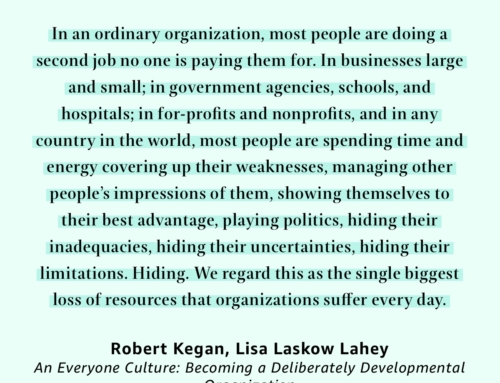LYSSA ADKINSSEPTEMBER 30, 2009
At Agile 2009, I delivered the results of a beautiful collaboration between myself and Lee Devin, co-author of the much loved Artful Making: What Managers Need to Know About How Artists Work. After our session had been accepted, Lee discovered that he could not attend the conference. Instead of saying, “See ya” or “Good luck with that” or “I guess we have to cancel” he drove five hours to work with me so that we could collaborate to create the session and prepare me to lead it solo. Lee acted well beyond the call of duty yet absolutely normal for the gentleman and accomplished collaborator I know him to be. Part of the session contained collaboration prep exercises that Lee has delivered to this same conference and others in the past, but with a twist. The twist was delivering these exercises aimed at agile coaches – to both let the coaches feel what it means to be truly prepared to collaborate and also to help them determine how they would teach this true-ism about collaboration back home:
On time is already late.
That is, if we arrive at work on time with our bodies only, having not groomed our minds to collaborate, we are simply late. Unprepared.
Teaching this concept can only be done viscerally. All I will say about that is that the session started with a viewing of Monty Python’s “Ministry of Silly Walks” skit. You can probably imagine where it went from there. Silliness, hilarity, concentration and good old-fashioned rabble rousing ensued.
After each collaboration prep exercise, participants reflected on their current state of mind and whether having team members prepare themselves to collaborate would positively impact their work. We considered questions such as these: What would the standup be like if the team members were on time with more than their bodies? If they arrived at work on time, mind and body, and ready for the day’s work ahead? What would be the difference in their conversations? Do you think they would have more and better ideas?
Then, we considered how to bring these exercises and teachings home. Part of that process was brainstorming simple, everyday things people can do to achieve the feeling of preparedness. For that, the group came up with over 70 ideas:
ideas for preparing to collaborate
At the end of the session, one courageous soul spoke up and said that she didn’t buy it. Her teams were already collaborating and she did not see how doing the things we did in the session would improve that… to which I said, “Maybe it won’t. What we’ve done here is one way I’ve learned to help my teams build their collaboration muscle. Only one way.” When I discussed this with Lee later, he had a ready answer for this challenge. He said, “The goal is to get to a place where what you’re doing is worth doing for its own sake, not to achieve some preconceived result. This is the artful way of working – the essence of collaboration. It’s valuable only while we’re doing it.”
In the process of designing this session for Agile 2009, Lee and I created a 2-day course called “Build Your Agile Team’s Collaboration Muscle” where we will be leading participants to explore the other true-isms about collaboration so they can, in turn, take what they learned back home and teach their teams. We are holding that course at a beautiful theatre near Philadelphia on December 7 and 8. Won’t you join us?
==================================
Mark Levison has provided a rundown of sessions at Agile 2009 including various people’s wrap-ups. It’s a good “one stop shop” to catch up on all the juicy stuff that happened at Agile 2009.





